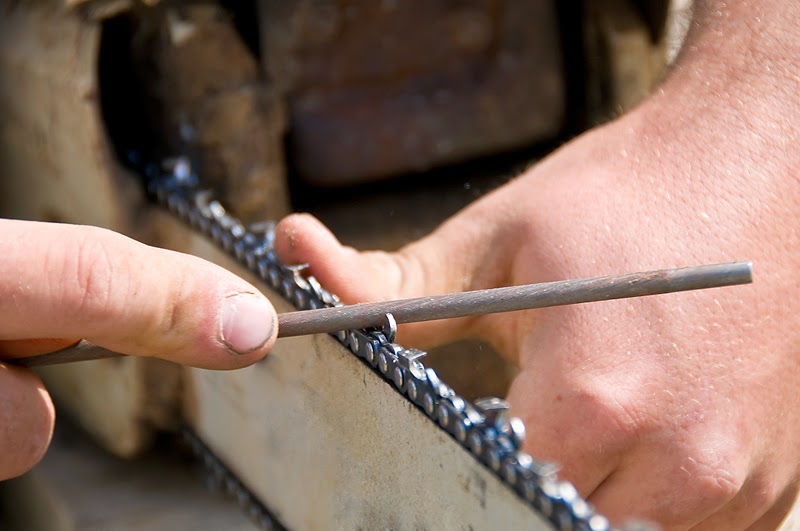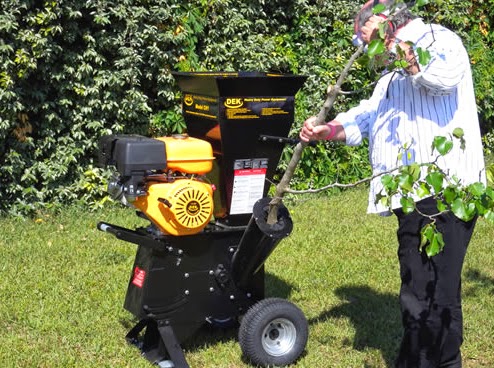 Many of us in the U.S. know how to stack firewood in the classic row-style on a rack.
Many of us in the U.S. know how to stack firewood in the classic row-style on a rack.However, if you have a lot of wood to stack, perhaps more than you can fit on your rack, and it needs to be cured, a Holz Hausen is an attractive and very functional way to stack and season firewood without a rack.
1. Drive the Stake
Drive a stake about 7-8 feet tall into the ground where you want to build your Holz Hausen. Mark the stake 5 1/2 feet above the ground. The stake marks the center of the ring, and as your pile gets larger, the pieces of wood will somewhat fall inward and rest against the stake.
2. Ring Around the Rosie
Lay your logs around the stake in a circular fashion, smaller ends pointing toward the stake. Stack a couple of rows high to create a solid base. Once you've got a nice, even two-layer ring, stack a perpendicular layer (lengthwise) continuing to the outer edge of the ring.
3. Throw the Scraps in the Bin
There will be an empty area in the middle of your ring. That area is for throwing uneven or oddly shaped scrap wood that won't stack neatly. Stack the inner and outer lengthwise rings evenly to improve stability and prevent it from collapsing. Throw scrap pieces in the middle as you go to provide some inner support.
4. Top it Off
Once you've reached the 5 1/2 foot marker on your stake, allow pieces to begin slope outward toward the outside. Then you can cover the top of the Holz Hausen with wood laid with the bark facing up in order to shield the wood underneath it from getting wet when it rains or snows.
Now you've got yourself a beautifully functional Holz Hausen, and plenty of room left on your firewood holder for the wood that's finished curing. Keep the cured wood on your firewood holder by your house for easier access.
Drive a stake about 7-8 feet tall into the ground where you want to build your Holz Hausen. Mark the stake 5 1/2 feet above the ground. The stake marks the center of the ring, and as your pile gets larger, the pieces of wood will somewhat fall inward and rest against the stake.
2. Ring Around the Rosie
Lay your logs around the stake in a circular fashion, smaller ends pointing toward the stake. Stack a couple of rows high to create a solid base. Once you've got a nice, even two-layer ring, stack a perpendicular layer (lengthwise) continuing to the outer edge of the ring.
3. Throw the Scraps in the Bin
There will be an empty area in the middle of your ring. That area is for throwing uneven or oddly shaped scrap wood that won't stack neatly. Stack the inner and outer lengthwise rings evenly to improve stability and prevent it from collapsing. Throw scrap pieces in the middle as you go to provide some inner support.
4. Top it Off
Once you've reached the 5 1/2 foot marker on your stake, allow pieces to begin slope outward toward the outside. Then you can cover the top of the Holz Hausen with wood laid with the bark facing up in order to shield the wood underneath it from getting wet when it rains or snows.
Now you've got yourself a beautifully functional Holz Hausen, and plenty of room left on your firewood holder for the wood that's finished curing. Keep the cured wood on your firewood holder by your house for easier access.



